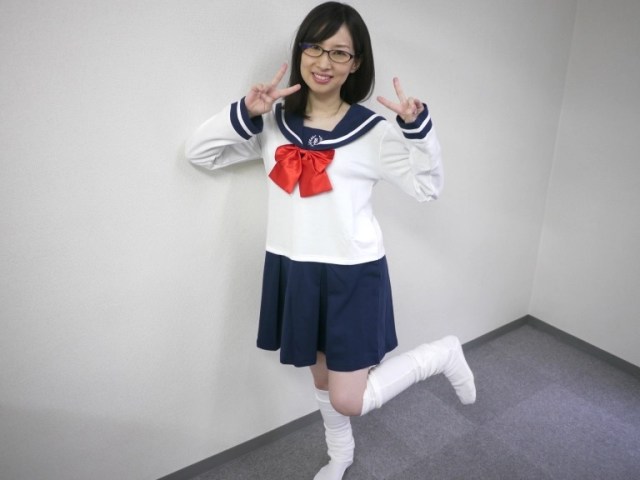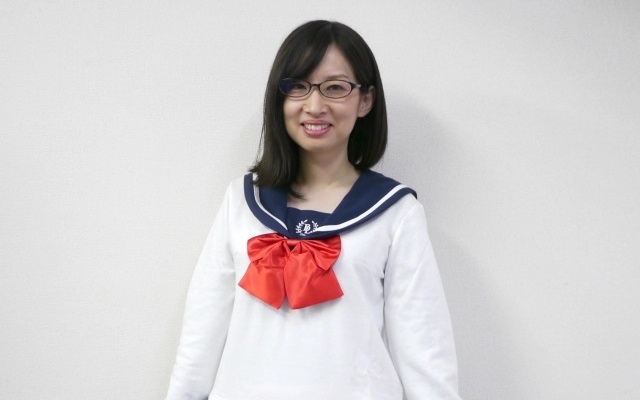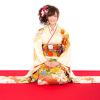
Schoolgirl uniform manufacturer diagrams four major variations.
The sailor-style school uniform has practically become a symbol of Japan itself, and part of the reason why is that the uniform is, well, more or less uniform. Female students at a countless number of schools in Japan wear a blouse with a wide sailor collar and ribbon tied below it.
However, while the students at any one school might all be wearing the same uniform, the design from one school to the next can have all sorts of subtle differences, as pointed out by Okayama Prefecture’s Akashi School Uniform Company. In a recent tweet from its official account, the company explained that there are all sorts of collar variations for schoolgirl uniforms, and that four of the most common are named after different parts of Japan.
セーラー服といっても様々な型があることをご存知でしょうか?
— 明石スクールユニフォームカンパニー (@akashi_suc) November 29, 2021
巷では関東襟・関西襟・名古屋襟などとも言われているようです。
とはいえ、関東だから浅め、名古屋だから深めという決まりがあるわけではなく…。
なぜ地域によって傾向が偏っているのか実は謎なのです🤔#制服豆知識 pic.twitter.com/QvgNclt5v7
Starting with the bottom left illustration, the Kanto Collar (“Kanto-eri” in Japanese) takes its name from the Kanto, or East Japan, region, which includes Tokyo. The Kanto Collar’s distinguishing characteristics are that the sailor collar (colored blue in the picture) is slightly narrower than the wearer’s shoulders and has a rounded hem at its bottom. The collar itself is short and ends above the wearer’s bust, so there may or may not be a section of the blouse showing in the middle of the collar opening (when a portion of the blouse is present in this space, the designers refer to it as muneate, the same word used for for “breastplate” or “bib” in Japanese).
Moving to the top left example, the Sapporo Collar, named after the capital city of Hokkaido Prefecture, is similar to the Kanto, but wider, stretching to the end of the shoulders. It’s also shorter than the Kanto Collar, with the neck opening high enough that there’s no need for the blouse to extend above it.
Things start to look very different with the Kansai Collar, which refers to the part of Japan that includes Osaka, in the upper right drawing. With this style, the collar reaches the edge of the shoulders, but plunges down in straight lines that stretch down past the top of the wearer’s bust. Because of this, a muneate is a must.
And finally, the Nagoya Collar, at the bottom right, is in many ways an extreme version of the Kansai Collar. The collar reaches past the edge of the shoulders and is deeper than any of the other three styles, so there will always be a large section of blouse above the opening, and the ribbon is also likely to be smaller because of its lower placement.
▼ By these criteria, this sailor suit-style roomwear our reporter Meg is wearing has a Kanto collar.
Akashi School Uniform Company goes on to explain, though, that while these collar types are called Kanto, Kansai, Sapporo, and Nagoya, they’re not exclusive to, or universal in, those parts of Japan. The exact reason they came to be called by those names isn’t 100-percent clear, but the company speculates that those might simply have been the respective areas where the styles initially became common. Regardless of their linguistic origins, though, the company says they’ve now become part of the uniform industry jargon, and they’re just one example of how there’s more variety to Japanese school uniforms than there might seem to be at first glance.
Source: Twitter/@akashi_suc via Otakomu
Photos ©SoraNews24
● Want to hear about SoraNews24’s latest articles as soon as they’re published? Follow us on Facebook and Twitter!


 Give some Japanese schoolgirl style to your pet with the adorable schoolcat collar
Give some Japanese schoolgirl style to your pet with the adorable schoolcat collar Impractical yet adorable Hello Kitty school uniform set for spring debut
Impractical yet adorable Hello Kitty school uniform set for spring debut Votes are in! Taiwan chooses its top 5 girls’ school uniforms【Photos】
Votes are in! Taiwan chooses its top 5 girls’ school uniforms【Photos】 Sport some subtle Sailor Moon summer looks with these sailor-style T-shirts from Premium Bandai
Sport some subtle Sailor Moon summer looks with these sailor-style T-shirts from Premium Bandai Sailor Moon socks from Japan appear as miniature uniforms for your feet
Sailor Moon socks from Japan appear as miniature uniforms for your feet How to order snacks on a Shinkansen bullet train in Japan
How to order snacks on a Shinkansen bullet train in Japan Demon Slayer: Kimetsu no Yaiba gets new roller coaster attractions and food at Universal Studios Japan
Demon Slayer: Kimetsu no Yaiba gets new roller coaster attractions and food at Universal Studios Japan New samurai glasses are Japan’s latest weird must-have souvenir
New samurai glasses are Japan’s latest weird must-have souvenir Burger King Japan suddenly adds Dr. Pepper and Dr. Pepper floats to its menu nationwide
Burger King Japan suddenly adds Dr. Pepper and Dr. Pepper floats to its menu nationwide Nintendo history you can feel – Super NES, N64, and GameCube controllers become capsule toys
Nintendo history you can feel – Super NES, N64, and GameCube controllers become capsule toys High-fashion Totoro cuddle purse is like an elegant stroll in the forest【Photos】
High-fashion Totoro cuddle purse is like an elegant stroll in the forest【Photos】 Japan’s new difficult-to-drink-from beer glass protects your liver, but it’s a brutal experience
Japan’s new difficult-to-drink-from beer glass protects your liver, but it’s a brutal experience Kyoto Tower mascot termination reveals dark side behind cute Japanese characters
Kyoto Tower mascot termination reveals dark side behind cute Japanese characters New Pokémon ice cream, dessert drinks, and cool merch coming to Baskin-Robbins Japan【Pics】
New Pokémon ice cream, dessert drinks, and cool merch coming to Baskin-Robbins Japan【Pics】 To combat declining birth rate, Japan to begin offering “Breeding Visas” to foreigners
To combat declining birth rate, Japan to begin offering “Breeding Visas” to foreigners Hello, cosmetics! Clinique teams up with Hello Kitty this summer for first-time collaboration
Hello, cosmetics! Clinique teams up with Hello Kitty this summer for first-time collaboration “The most Delicious Cup Noodle in history” – Japan’s French Cup Noodle wins our heart【Taste test】
“The most Delicious Cup Noodle in history” – Japan’s French Cup Noodle wins our heart【Taste test】 Starbucks releases a cute Frappuccino and Unicorn Cake…but not in Japan
Starbucks releases a cute Frappuccino and Unicorn Cake…but not in Japan McDonald’s Japan’s Soft Twist Tower: A phantom ice cream only sold at select branches
McDonald’s Japan’s Soft Twist Tower: A phantom ice cream only sold at select branches Yabai Ramen: What makes this Japanese ramen so dangerous?
Yabai Ramen: What makes this Japanese ramen so dangerous? Finally! Nintendo Japan expands Switch 8-bit controller sales to everybody, Online member or not
Finally! Nintendo Japan expands Switch 8-bit controller sales to everybody, Online member or not Japanese government wants to build luxury resorts in all national parks for foreign tourists
Japanese government wants to build luxury resorts in all national parks for foreign tourists 10 things you should buy at 7-Eleven in Japan
10 things you should buy at 7-Eleven in Japan Studio Ghibli releases anime heroine cosplay dresses that are super comfy to wear
Studio Ghibli releases anime heroine cosplay dresses that are super comfy to wear Woman charged for driving suitcase without a license in Osaka
Woman charged for driving suitcase without a license in Osaka Studio Ghibli unveils My Neighbour Totoro miniature house model
Studio Ghibli unveils My Neighbour Totoro miniature house model Kyoto experiencing problems with foreign tourists not paying for bus fares, but not on purpose
Kyoto experiencing problems with foreign tourists not paying for bus fares, but not on purpose Fighting mild hunger with a Japanese soda that turns into jelly in the stomach【Taste test】
Fighting mild hunger with a Japanese soda that turns into jelly in the stomach【Taste test】 Studio Ghibli’s Howl’s Moving Castle tapestry unveiled in Japan for first time
Studio Ghibli’s Howl’s Moving Castle tapestry unveiled in Japan for first time McDonald’s new Happy Meals offer up cute and practical Sanrio lifestyle goods
McDonald’s new Happy Meals offer up cute and practical Sanrio lifestyle goods Sales of Japan’s most convenient train ticket/shopping payment cards suspended indefinitely
Sales of Japan’s most convenient train ticket/shopping payment cards suspended indefinitely Sold-out Studio Ghibli desktop humidifiers are back so Totoro can help you through the dry season
Sold-out Studio Ghibli desktop humidifiers are back so Totoro can help you through the dry season Japanese government to make first change to romanization spelling rules since the 1950s
Japanese government to make first change to romanization spelling rules since the 1950s Foreigner’s request for help in Tokyo makes us sad for the state of society
Foreigner’s request for help in Tokyo makes us sad for the state of society Ghibli founders Toshio Suzuki and Hayao Miyazaki contribute to Japanese whisky Totoro label design
Ghibli founders Toshio Suzuki and Hayao Miyazaki contribute to Japanese whisky Totoro label design Doraemon found buried at sea as scene from 1993 anime becomes real life【Photos】
Doraemon found buried at sea as scene from 1993 anime becomes real life【Photos】 Tokyo’s most famous Starbucks is closed
Tokyo’s most famous Starbucks is closed Princesses, fruits, and blacksmiths: Study reveals the 30 most unusual family names in Japan
Princesses, fruits, and blacksmiths: Study reveals the 30 most unusual family names in Japan Cat cosplay collars form Japan turn your kitty into Sailor Moon in everything but name【Photos】
Cat cosplay collars form Japan turn your kitty into Sailor Moon in everything but name【Photos】 Anime film The Anthem of the Heart inspires new school uniform loungewear from Village Vanguard
Anime film The Anthem of the Heart inspires new school uniform loungewear from Village Vanguard Japanese schoolgirl roomwear takes sailor suit uniform to another level as wearable blanket
Japanese schoolgirl roomwear takes sailor suit uniform to another level as wearable blanket This type of conveyor belt sushi tastes different in Tokyo than it does in Osaka, but why?
This type of conveyor belt sushi tastes different in Tokyo than it does in Osaka, but why? East Japan Railway abolishes skirts, ribbons in women’s uniforms to “eliminate gender difference”
East Japan Railway abolishes skirts, ribbons in women’s uniforms to “eliminate gender difference” Japan’s Department of Magic releases new “Magic School” uniform
Japan’s Department of Magic releases new “Magic School” uniform In the name of the moon, do nothing! Sailor Moon pajamas arrive to help you loaf around the house
In the name of the moon, do nothing! Sailor Moon pajamas arrive to help you loaf around the house Japanese middle school criticized for pulling out girls’ bra straps to check their color
Japanese middle school criticized for pulling out girls’ bra straps to check their color Japanese public school to allow male students to wear skirts, chest ribbons as part of uniform
Japanese public school to allow male students to wear skirts, chest ribbons as part of uniform Cosplay like an angelic student in a winged Japanese schoolgirl uniform
Cosplay like an angelic student in a winged Japanese schoolgirl uniform Paris Hilton’s Sailor Moon cosplay and character description are bafflingly off-source material
Paris Hilton’s Sailor Moon cosplay and character description are bafflingly off-source material No more miniskirts? Changes happening in Japanese schoolgirl uniform fashion trends
No more miniskirts? Changes happening in Japanese schoolgirl uniform fashion trends Can our 30-something reporter pull off the fashions of this hit lucky bag for Tokyo teens?【Pics】
Can our 30-something reporter pull off the fashions of this hit lucky bag for Tokyo teens?【Pics】 Be a magical girl this fall! LIZ LISA and Madoka Magica’s collaboration fall line is here
Be a magical girl this fall! LIZ LISA and Madoka Magica’s collaboration fall line is here Cat collars blouse lets you always have a fashionable cat friend with you wherever you go 【Pics】
Cat collars blouse lets you always have a fashionable cat friend with you wherever you go 【Pics】
Leave a Reply